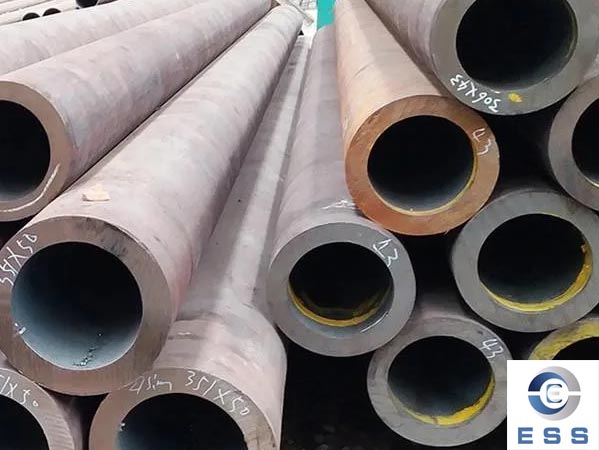From the perspective of the mechanism, it is generally believed that the non-metallic inclusions in the tube blank will destroy the continuity and compactness of the structural seamless steel pipe, and serious inclusions may even cause delamination inside the structural seamless steel pipe. Another is hydrogen-induced cracking, that is, due to the accumulation of hydrogen in the steel, the partial pressure of the gas inside the metal is too high, and white spots are formed in the round tube blank. During the rolling process, the cracks expand, and finally delamination defects are formed. In addition, the stress generated by the uneven deformation of the two-roll cross-rolling piercing exceeds the plastic strength, which can also cause delamination.

In the case of strict smelting control, the third situation often occurs, and the control measures are:
1. Improve the plastic toughness of structural steel pipes
Improve the cleanliness of molten steel and reduce harmful inclusions; increase the proportion of equiaxed crystals in the continuous casting billet to reduce central segregation and central porosity; adopt a reasonable cooling system to avoid internal cracks in the billet; The slow cooling process reduces internal stress, thereby ensuring that the microstructure and mechanical properties of the tube blank and the finished 16mn structural steel pipe meet the requirements of technical standards.
2. Reasonable control of heating temperature
The optimum heating temperature is selected by measuring the thermoplastic curve. The heating of the tube blank should also pay attention to having enough holding time to reduce the deformation resistance and improve the plastic toughness of the 16mn structural steel tube.
3. Reduce the roll speed
The roll speed is a key parameter of the piercing process. In the process of changing the roll speed from low to high, there is a critical roll speed that starts to delaminate. When the roll speed is low, the tube blank is easy to form cavities; when the roll speed is high, the tube blank and structural steel pipe are easy to form delamination defects. In order to eliminate the delamination defect of billet and structural steel pipe, the roll speed should be reduced below the critical roll speed where delamination begins to occur.













 Eastern Steel Manufacturing Co.,Ltd not only improve product production and sales services, but also provide additional value-added services. As long as you need, we can complete your specific needs together.
Eastern Steel Manufacturing Co.,Ltd not only improve product production and sales services, but also provide additional value-added services. As long as you need, we can complete your specific needs together.










